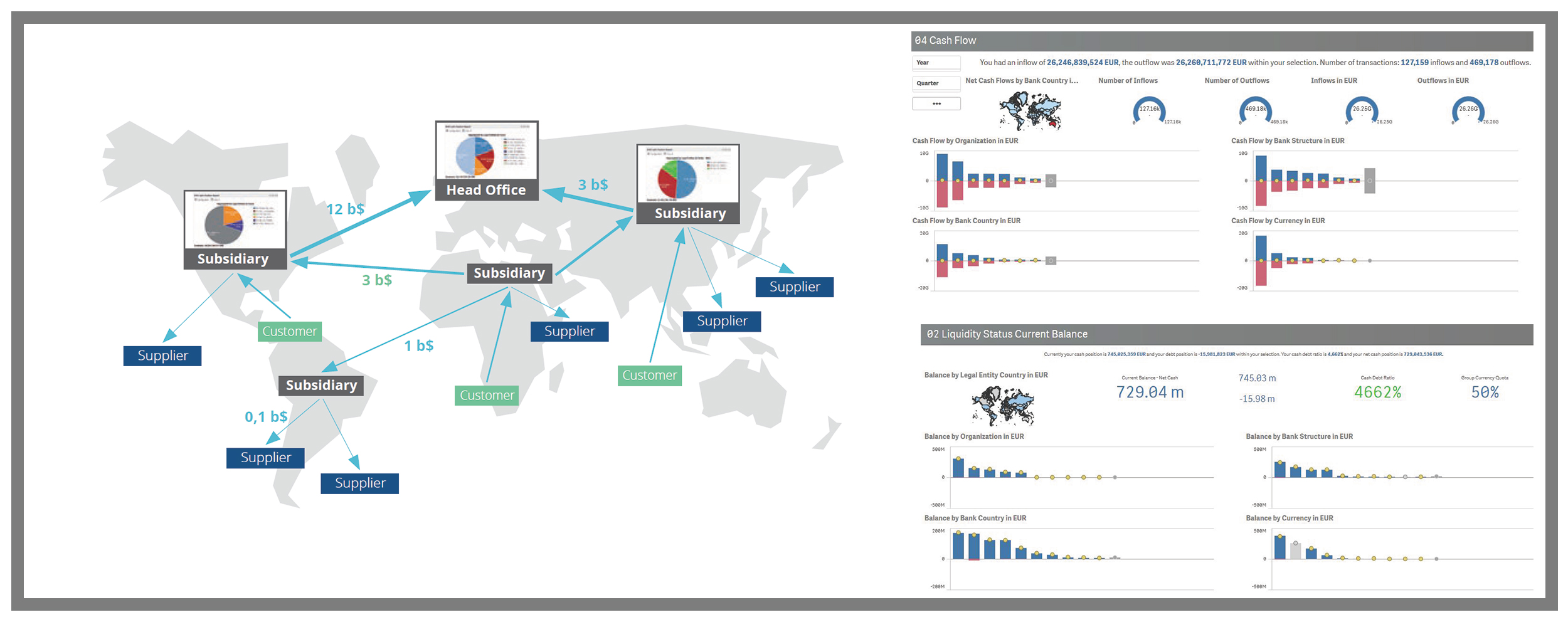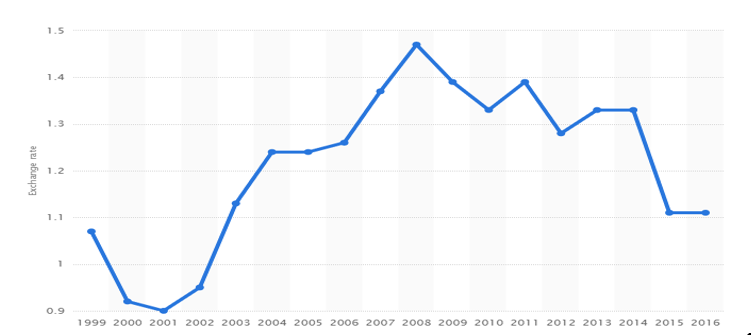| 1-3-2017 | treasuryXL |
The latest TMS Buyer’s guide of the Association for Financial Professionals (AFP) has been published in 2016, but contains enough interesting information to look at it and make a short summary. With the buyer’s guide AFP wants to offer its members a closer look at treasury technology today. Some of the top TMS vendors in the (global) marketplace were asked to share their view on what treasury departments were looking for in a system—or how such a system should look like. It is a growing market and there are many options to choose from. The questions is, how a treasury professional can judge if the TMS he is considering or currently uses is the one best suited to his needs? According to AFP the TMS Guide will help practitioners to answer that question by giving a list of TMS suppliers and describe the latest technologies and trends. As a treasury professional who also is responsible for a smooth treasury proces within your company you want to be sure that you are getting the most for your money.
The content of the Guide is divided in two parts: a list of TMS suppliers where they describe shortly their products and services and a TMS functionality matrix, which lines out specific TMS functionalities and which company from the list supplies which services or products for the different functionalities.
The list in the guide is one of worldwide suppliers. Most likely AFP has not the intention to offer a complete list and it is obvious that you will find local suppliers in the different markets.
These are the companies in the guide:
- ION
- Orbit
- Axletree
- Bellin
- Bloomberg
- Chatham Financial
- Expertus
- Financial Sciences Corporation
- GTreasury
- Hanse Orga Group
- Kyriba
- OpenLink
- Reval
- Strategic Treasurer
- Treasury Xpress
For our readers we will focus on some companies that operate in the European/Benelux market.
Bellin
Bellin (in the Benelux represented by Enigma) has successfully launched over 15,000 companies on their tm5 Treasury Management system, leading the industry in project success rates. This has given a certain perspective on some of the less thought about aspects of TMS implementation, especially when it comes to cash management. They focus on three factors they think people do not pay enough attention to when implementing their TMS, and how these factors can improve the cash positioning, forecasting and risk management:
- Don’t automate, do streamline
- Get your subsidiaries involved in cash forecasting early, so you can use their data.
- When it comes to risk management, start with real data, and use specific analysis to establish where you have weaknesses
Bellin states that implementing the TMS system is only the beginning and that more challenges come along while you are on the way. Read more.
Kyriba
Kyriba is the global leader in cloud treasury solutions. Kyriba delivers award-winning, secure, modular and scalable SaaS treasury solutions with integrated bank connectivity, payments, and risk management. They developed a cloud treasury management solution that is delivered on a single platform. Kyriba’s Treasury Cloud is used by more than 1,300 clients globally to protect against payments fraud and cybercrime, while proactively managing market volatility, onerous compliance requirements, and creating opportunities to fund new growth. Kyriba’s Cash and Liquidity capabilities include Cash Positioning, Cash Forecasting, Advanced Forecasting, Variance Analysis, Liquidity Forecasting, In-House Banking, and Multi-Lateral Netting. Clients also benefit from full accounting, GL posting, and Bank-tobook reconciliation workflows. The Cash and Liquidity modules are supported by the Kyriba Connectivity Hub and Data Exchange. With Kyriba’s Payment Management suite, clients can initiate, approve and release payments to any of their banks globally. Kyriba also supports payment factories, including multiple routing options to integrate all corporate payment workflows in a centralized payment hub. Read more
Hanse Orga
Hanse Orga is a global provider of specialized financial software for CFOs, treasurers and financial professionals seeking the perfect solution for their individual requirements. Their FS² software family is fully embedded within the SAP landscape so that companies capitalize on existing technology investments and profit from seamless finance processes. Over 1,000 customers in more than 50 countries worldwide have already profited from their systems and consulting.
With their SAP-embedded software family FS² and specialized consulting they help customers worldwide to achieve best results for their finance processes. FS² works with SAP S/4HANA Finance as well as previous SAP systems such as HANA and ECC! Corporates benefit from future-proof functions, a modern user experience and flexible report settings – on any device, anytime and anywhere! Whether the software is installed on premise, in the cloud or as a hybrid solution, the software supports fully audit-proof processes.
FS² is available for these areas: Cash, Liquidity and Treasury Management, Accounts Payable, Accounts Receivable, Bank Account Management and Working Capital Management. Read more
Reval
Reval is a global provider of a scalable cloud platform for Treasury and Risk Management (TRM). Their cloud-based offerings enable enterprises to better manage cash, liquidity and financial risk, and to account for and report on complex financial instruments and hedging activities. The scope and timeliness of the data and analytics they provide allow chief financial officers, treasurers and finance managers to operate more confidently in an increasingly complex and volatile global business environment. With offerings built on the Reval CONTACT Cloud Platform companies can optimize treasury and risk management activities across the enterprise for greater operational efficiency, security, control and compliance. They offer Reval Core ™ for mid-market treasuries and Reval Choice™ for organizations faced with
complex treasury and risk challenges. Read more
Treasury matrix in the TMS buyer’s guide
The TMS functionality matrix lists (all) the companies in the guide for the following functionalities:
- Foreign Exchange
- Debit Interest rate products
- Derivatives
- Electronic Dealing
- Balance & transaction management
- Bank account management
- Reconciliation
- Forecasting
- Confirmation
- Accounting
- Reporting
- Security
- Target company size
- Implementation
For more information on the details of the functionality matrix follow this link.
Source: TMS Buyer’s Guide 2016, AFP
We believe that the functionality matrix offers very valuable information for treasurers and finance professionals who have to make choices for the implementation of a system.
Some other TMS suppliers in Europe/The Benelux not mentioned in the Guide
It goes without saying that in the Benelux/Europe you will find other suppliers, let me mention just a few – Aaron, Integrity, IT2, Trinity (Wieltec), Global$ WallStreet and Treasury Services.
As an example Treasury Services BV creates a competitive advantage for their clients through the implementation of innovative solutions. They offer a complete treasury management software, treasury training and education, financial engineering solutions and consultancy.

 Proferus
Proferus Cashforce Cash forecasting 2.0
Cashforce Cash forecasting 2.0


 Our expert Carlo de Meijer is our blockchain specialist and publishes his articles on a regular basis. We present his latest article about blockchain and supply chain finance in a shorter version.
Our expert Carlo de Meijer is our blockchain specialist and publishes his articles on a regular basis. We present his latest article about blockchain and supply chain finance in a shorter version.
 How do strategic professionals decide on the best path to success for their company? The key is in transparency and real-time reporting. If it comes to the responsibility of the treasurer or financial professional this means deciding about company-wide cash flow and liquidity levels, bank, customer and supplier relations and working capital.
How do strategic professionals decide on the best path to success for their company? The key is in transparency and real-time reporting. If it comes to the responsibility of the treasurer or financial professional this means deciding about company-wide cash flow and liquidity levels, bank, customer and supplier relations and working capital.


 In a perfect world, one currency is the ultimate dream for every Treasurer. The introduction of the Euro has been a major leap forward in that direction. However, current anti-euro sentiments boosted by populist movements all over Europe, seriously threaten to hamper this unique and visionary European accomplishment. This article focusses on what impact the introduction of the Euro had for the corporate treasurers and what will happen if the Euro gets skipped.
In a perfect world, one currency is the ultimate dream for every Treasurer. The introduction of the Euro has been a major leap forward in that direction. However, current anti-euro sentiments boosted by populist movements all over Europe, seriously threaten to hamper this unique and visionary European accomplishment. This article focusses on what impact the introduction of the Euro had for the corporate treasurers and what will happen if the Euro gets skipped.

 Working Capital is the term for the operating liquidity of a company that can be used and is needed to continue the day to day business. To calculate the working capital you have to deduct the current liabilities from the current assets. By managing your account receivables, accounts payables and inventory you can fluctuate your cash position and optimize your working capital so that the cash “trapped” in the company can be lowered to a minimum while you are still able to meet your payment agreements.
Working Capital is the term for the operating liquidity of a company that can be used and is needed to continue the day to day business. To calculate the working capital you have to deduct the current liabilities from the current assets. By managing your account receivables, accounts payables and inventory you can fluctuate your cash position and optimize your working capital so that the cash “trapped” in the company can be lowered to a minimum while you are still able to meet your payment agreements. Building on the ideas shared in a
Building on the ideas shared in a 



